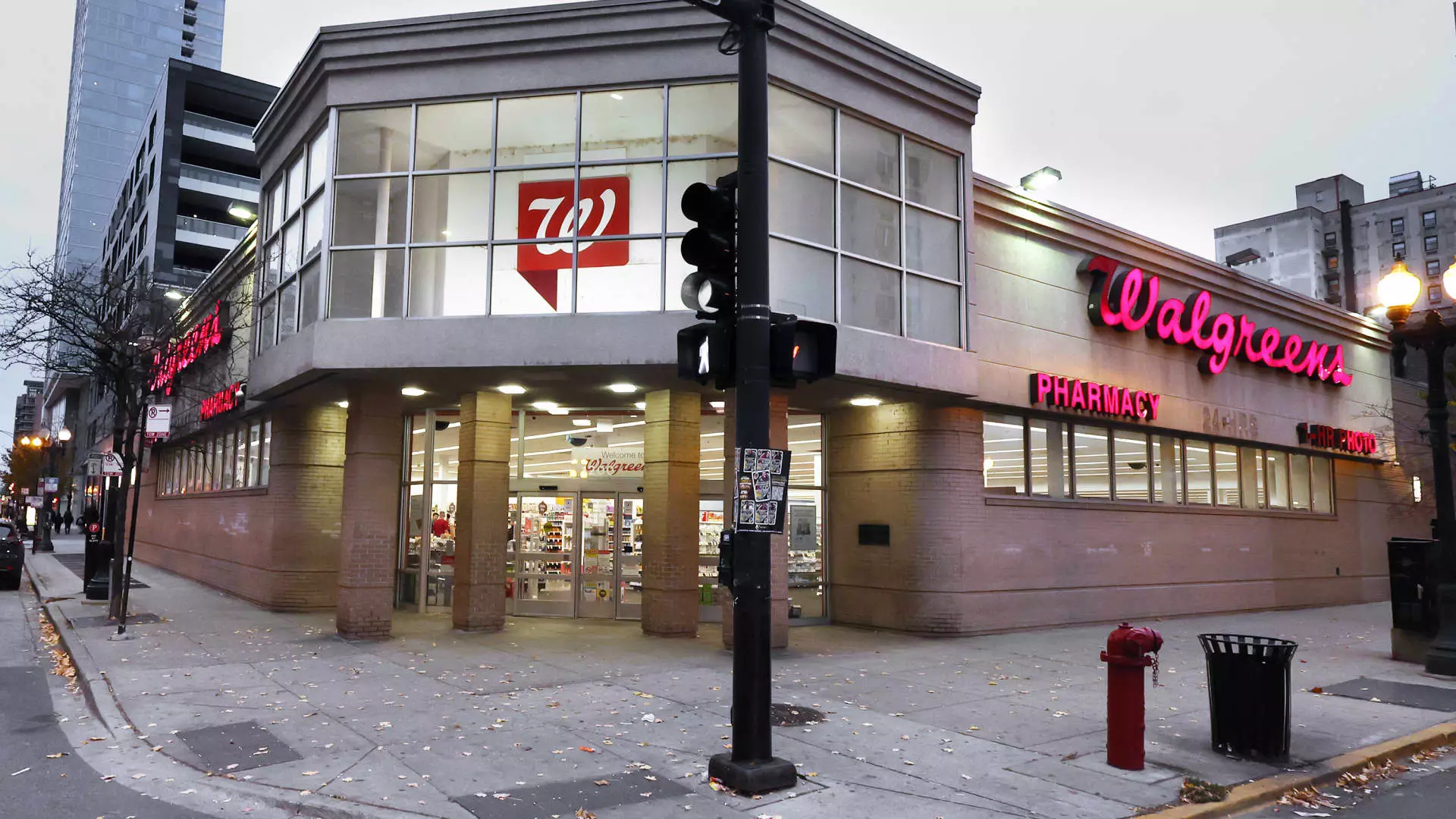Walgreens, a staple in the American retail landscape for nearly a century, is undergoing a seismic shift as it prepares to become a private entity in a landmark $10 billion deal with Sycamore Partners. This transition is not just financial; it represents a symbolic end to Walgreens’ tumultuous journey as a public company since 1927. As the retail pharmacy faces enormous rubble from competition, changing consumer behaviors, and substantial financial losses, the question arises: Can Walgreens reinvent itself while shedding its public persona, or will this transformation merely prolong its sufferings?
Financial Performance: An Illusion of Recovery?
On the surface, Walgreens’ recent fiscal second-quarter earnings report appears optimistic, with revenue hitting $38.59 billion, surpassing expectations. However, a closer examination reveals a situation laden with contradictions. The company reported an alarming net loss of $2.85 billion, a marked improvement from last year’s staggering $5.91 billion loss, but still indicative of a business in distress. The adjusted earnings, which stood at 63 cents per share versus the expected 53 cents, might appease stockholders in the short term, yet they mask deeper underlying issues.
Tim Wentworth, Walgreens’ CEO, tactfully emphasized “disciplined cost management,” yet a $4.2 billion impairment charge related to its U.S. retail pharmacy losses raises eyebrows. The jubilant statistics are not nearly as glowing once adjusted for legal settlements, ongoing operational challenges, and the thorny consequences of its foray into healthcare. Will these losses continue to recur, or are they a one-time blip as the company strives to pivot its strategy?
The Healthcare Gamble: Growing Pains or Systemic Failure?
As Walgreens attempts to lay down roots in the burgeoning healthcare sector, the results have been less than inspiring. The venture into primary-care clinic chains like VillageMD has yielded a mix of profits and losses, suggesting that Walgreens has yet to find its footing. The juxtaposition of retail pharmacy weaknesses alongside stalled healthcare endeavors paints a picture of a company flailing without a clear direction.
Moreover, the competition isn’t just coming from traditional rivals such as CVS; it extends to tech-driven entities like Amazon that are reshaping how consumers view pharmacy services. Are Walgreens’ strategic shifts keeping pace with these industry transformations, or is it merely reacting to market pressures? Perhaps what Walgreens needs isn’t just cost-cutting measures or financial band-aids, but a revolutionary rethink of its business model grounded in innovative service delivery and customer engagement.
Cost Cutting and Legal Settlements: Short-Term Gains or Long-Term Viability?
Walgreens stands at a financial precipice, grappling with competition, systemic reform, and legal-related costs, especially in the wake of opioid-related settlements. The recent $969 million legal payouts will undoubtedly weigh heavily on its balance sheet, further incentivizing cost-cutting measures that could compromise long-term stability for short-term financial appeasement.
The looming question remains: Are these cost-cutting efforts genuinely fostering a sustainable economic model, or are they akin to wielding a double-edged sword? By shuttering stores and reducing staff, Walgreens risks alienating its customer base at a time when consumer loyalty is paramount to navigating tumultuous economic waters.
Is a Private Future a Brighter Future?
As Walgreens transitions to a private company, the possibilities of re-engineering its identity emerge. Freed from the prying eyes of public market scrutiny, it could potentially innovate and collaborate in ways that capitalize on emerging trends. Still, will Sycamore Partners, a firm known for its experience in retail turnarounds, inject the necessary dynamism into Walgreens, or will it simply oversee a rehash of policies that have failed in the past?
The success of this transition will heavily depend on whether Walgreens can capitalize on its accumulated expertise while vigorously focusing on new initiatives that address both healthcare needs and retail realities. It’s an uphill battle; one that requires not just a financial overhaul but also a shift in corporate culture aimed at fostering resilience in an era characterized by rapid, disruptive change.
While Walgreens emerges from its public company status, its future trajectory hinges on a willingness to innovate beyond the hollow echoes of past successes. The stakes are high, and the potential for a transformative rebirth is palpable, but it must be handled with astute care and acute awareness of the evolving marketplace dynamics.

